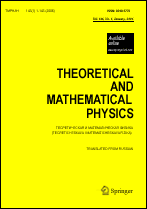|
Why do the microstructures of the main pulse and the interpulse of
the pulsar in the Crab nebula differ so dramatically?
V. M. Kontorovich
Institute of Radio Astronomy NAS Ukraine, Kharkiv, Ukraine
Keywords:
pulsar, Crab nebula pulsar, radiation mechanism, main pulse, interpulse,
pulse microstructure.
Received: 16.06.2019
Revised: 21.08.2019
Citation:
V. M. Kontorovich, “Why do the microstructures of the main pulse and the interpulse of
the pulsar in the Crab nebula differ so dramatically?”, TMF, 202:3 (2020), 447–457; Theoret. and Math. Phys., 202:3 (2020), 390–398
Linking options:
https://www.mathnet.ru/eng/tmf9763https://doi.org/10.4213/tmf9763 https://www.mathnet.ru/eng/tmf/v202/i3/p447
|


| Statistics & downloads: |
| Abstract page: | 287 | | Full-text PDF : | 68 | | References: | 40 | | First page: | 4 |
|




 Contact us:
Contact us: Terms of Use
Terms of Use
 Registration to the website
Registration to the website Logotypes
Logotypes








 Citation in format
Citation in format 